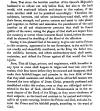|
Carberry Hill 15 June 1567 and its consequences.
Following the murder of Lord Darnley in the explosion on 9 February there was a strong
groundswell of opinion against both Queen Mary and her
paramour the Earl of Bothwell. A trial of Bothwell had
come to nothing when his prosecutor the Earl of Lennox
failed to appear having turned back with his 3000 troops
when confronted by Bothwell`s 4000 Borderers. The
elevation of Bothwell to Duke of Orkney and Zetland on 12
May, then marriage three days later, fuelled the flames of
opinion. With only the support of the Hamiltons (who hated
Lennox) Mary and Bothwell took to the field of
battle at Carberry Hill, near Musselburgh, on 15 June to
face the lords carrying a banner. This showed Darnley`s
infant son (the future King James VI) praying for
vengeance besides his dead father, beneath a tree, and the
legend “Judge and revenge my cause, O Lord “. In a
bloodless encounter taken up with negotiations Mary
offered to surrender if Bothwell was allowed to escape,
which he did riding from out of her life into exile and, it is said, life as a pirate for a while. Mary
was brought to Edinburgh and then imprisoned in Lochleven Castle, Kinross, where her keeper was Sir
 William Douglas, half brother to the Earl of Moray. Here she remained for some eleven months while public opinion against her gathered strength. William Douglas, half brother to the Earl of Moray. Here she remained for some eleven months while public opinion against her gathered strength.
In Edinburgh Sir James Balfour, in command at the Castle surrendered to the Lords. he also told them of a request by the Earl of Bothwell to send him a small silver box containing private papers. On 20 June one of Bothwell`s soldiers was
found in possession of a silver casket containing letters
from Mary to the Earl of Bothwell. It was soon alleged that
the letters proved her complicity in Darnley`s death and justified her deposition. About this time Bothwell was proclaimed for the actual physical murder of Darnley and a reward of 1000 crowns offered for his capture. John Knox denounced Mary from the pulpit and the General Assembly similarly raised its voice against her. On 24 July 1567 she was forced to abdicate, despite her protestations, and her son James VI was crowned five days later in Sterling. The Earl of Moray was appointed Regent, on 25 August 1567, taking an oath to maintain the Reformation.
An important decision about the succession was also taken by the General Assembly that met 23 July 1567, concerning the requirement that future kings would swear an oath to support the Kirk, this before they were crowned.

[For large image click on thumbnail]
Battle of Langside .
|